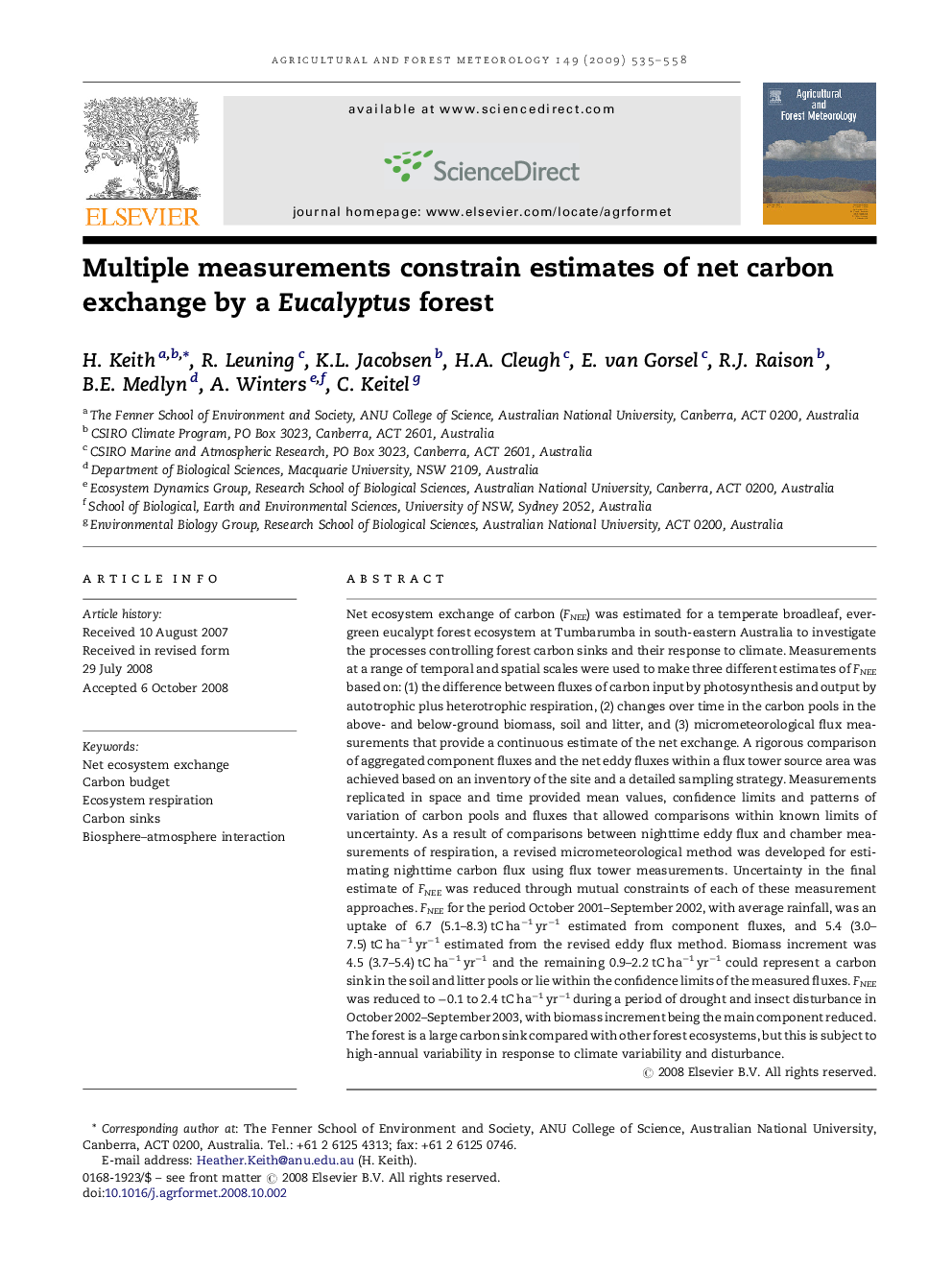| کد مقاله | کد نشریه | سال انتشار | مقاله انگلیسی | نسخه تمام متن |
|---|---|---|---|---|
| 82734 | 158412 | 2009 | 24 صفحه PDF | دانلود رایگان |

Net ecosystem exchange of carbon (FNEE) was estimated for a temperate broadleaf, evergreen eucalypt forest ecosystem at Tumbarumba in south-eastern Australia to investigate the processes controlling forest carbon sinks and their response to climate. Measurements at a range of temporal and spatial scales were used to make three different estimates of FNEE based on: (1) the difference between fluxes of carbon input by photosynthesis and output by autotrophic plus heterotrophic respiration, (2) changes over time in the carbon pools in the above- and below-ground biomass, soil and litter, and (3) micrometeorological flux measurements that provide a continuous estimate of the net exchange. A rigorous comparison of aggregated component fluxes and the net eddy fluxes within a flux tower source area was achieved based on an inventory of the site and a detailed sampling strategy. Measurements replicated in space and time provided mean values, confidence limits and patterns of variation of carbon pools and fluxes that allowed comparisons within known limits of uncertainty. As a result of comparisons between nighttime eddy flux and chamber measurements of respiration, a revised micrometeorological method was developed for estimating nighttime carbon flux using flux tower measurements. Uncertainty in the final estimate of FNEE was reduced through mutual constraints of each of these measurement approaches. FNEE for the period October 2001–September 2002, with average rainfall, was an uptake of 6.7 (5.1–8.3) tC ha−1 yr−1 estimated from component fluxes, and 5.4 (3.0–7.5) tC ha−1 yr−1 estimated from the revised eddy flux method. Biomass increment was 4.5 (3.7–5.4) tC ha−1 yr−1 and the remaining 0.9–2.2 tC ha−1 yr−1 could represent a carbon sink in the soil and litter pools or lie within the confidence limits of the measured fluxes. FNEE was reduced to −0.1 to 2.4 tC ha−1 yr−1 during a period of drought and insect disturbance in October 2002–September 2003, with biomass increment being the main component reduced. The forest is a large carbon sink compared with other forest ecosystems, but this is subject to high-annual variability in response to climate variability and disturbance.
Journal: Agricultural and Forest Meteorology - Volume 149, Issues 3–4, 11 March 2009, Pages 535–558